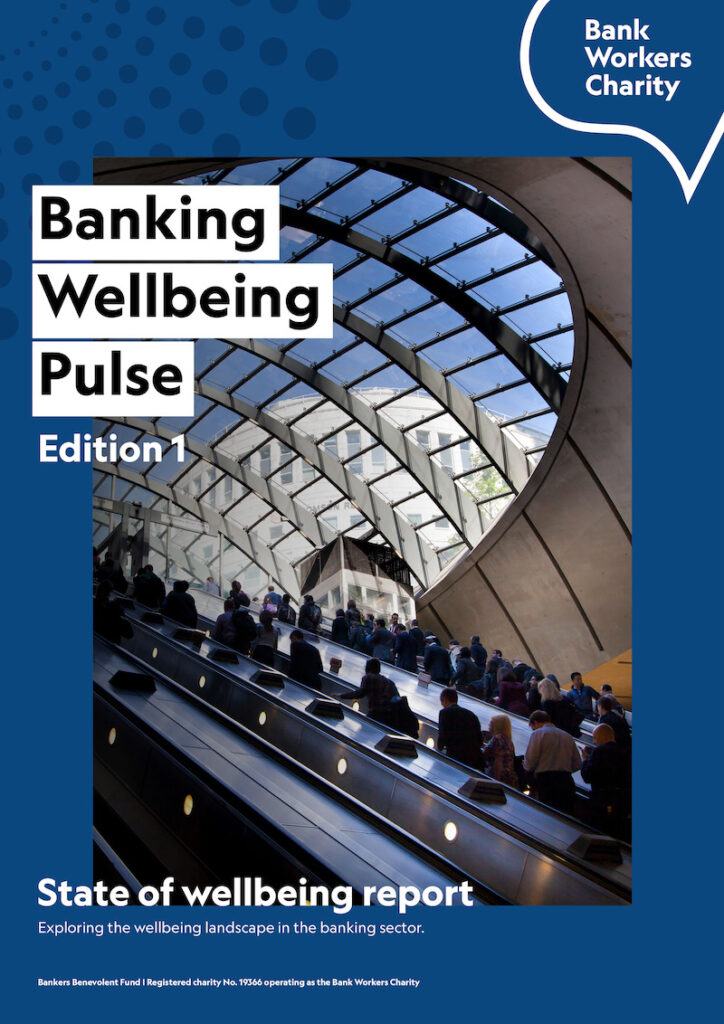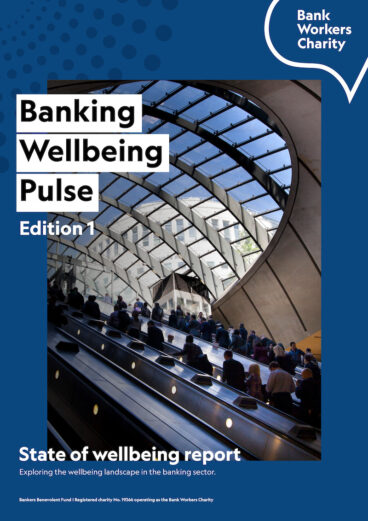A challenging banking environment, in the midst of a cost-of-living crisis caused by the highest annual rate of inflation in 40 years, means banks have needed to prioritise employee wellbeing like never before. We’ve seen that happening across the sector, as banks have developed more comprehensive and inclusive wellbeing strategies, addressing a wider range of wellbeing needs than ever.
We’ll be exploring the ways they’ve done that in the different sections of this report. For now, we’re going to explore the changes and the challenges that form the backdrop to all that banks have been doing on the wellbeing front.
What’s happening in banking?
After the worst of the pandemic, bank leaders and employees entered a multiyear period of global uncertainty, disruption and tension.
Technology, meanwhile, continues to evolve at a dizzying pace. Today, as a result, the banking sector is almost unrecognisable compared to how it looked 20 years ago. As banks focus on digitising their businesses, they continue to face risk and compliance challenges, with regulators and supervisors also struggling to keep up. Cybersecurity threats continue to escalate, too, which means that banks are feeling the need to bolster their data security protocols and technology.
Considering the above, it becomes apparent that to compete, grow and remain profitable, banks need to rapidly evolve.

Evolving cybersecurity threats
The banking industry has long been aware of the threat posed by cyberattacks, but today, it’s more vulnerable than ever before. According to the latest EY and Institute of International Finance (IIF) bank risk management survey, nearly three out of four chief risk officers identified cybersecurity as their top concern over the next 12 months, edging out credit risk.
72
of chief risk officers (CROs) identified cybersecurity as their top concern over the next 12 months
Not only are threats rapidly evolving, we’re now in a position where nation states are attacking particular sectors. When Russia prepared to invade Ukraine, for example, one of its primary targets was the banking industry.
Today’s cybercriminals are increasingly sophisticated, making the challenge of protecting sensitive data even more difficult. The consequences of failing to protect this data can be severe and include:
- Financial losses
- Repetitional damage
- Penalties
- Insurability issues
- Legal liabilities
Today, all employees have a part to play in helping secure the organisations they work for. After all, it’s not necessarily just full-scale cyber hacks and attacks that can cause major issues for businesses.

Digital revolution
67
of UK consumers manage their finances online
76
of UK users feel confident about using open banking technology
2.8
Fintech products and services used on average, per UK consumer
Source : Study by Woodseer in June, 2022.
Over the last decade, Fintech has shaken up the banking industry. Challenger banks have emerged as a new breed of online-only banks, providing a similar variety of services to traditional ones.
Because they generally have lower overheads – driven by a lack of physical locations and often unhindered by legacy infrastructures and systems – challenger banks can often offer competitive pricing for their services. This has put established banks under pressure to lower fees and offer more competitive interest rates. In addition, challenger banks are at the forefront of digital innovation and customer service, as customers use apps to manage their accounts, make payments, and transfer money on the go. For the majority of customers, visits to physical branches simply aren’t as necessary as they used to be.
While traditional banks may be able to survive and prosper through digital transformation, success will likely require in-house technology remodelling, as well as an overhaul of their product ranges. This process will take time, cost money and probably result in changes for existing employees and to workforces in general.
Technological innovation
Think about how most people bank today, and how that compares with 20 years ago. When we compare how individuals accessed banks two decades ago, and how they utilise banking services today.
The experience now looks completely different, and technological advances are at the heart of this…
Visiting physical branches, to stand in line...
Waiting on hold, to speak to someone on the phone...
Arranging face-to-face meetings, in person...
Digital banking using mobile apps...
Online consultations and remote meetings...
Conversing with chatbots and robo-advisors...

The transition to a digital environment
20
of UK individuals hadn’t visited a bank branch since before the COVID-19 pandemic
13
had visited a bank branch in the previous week
These figures are at least part of the reason behind the almost 5,000 bank branches in the UK that have closed their doors since 2015.
Large banks, meanwhile, have been using AI (Artificial Intelligence) to improve back-end operations, fraud detection and cybersecurity. Some are even testing generative AI to help build software faster.
However, banks remain cautious. They know that AI could introduce risks such as frustrating customers with too much automation, breaking privacy laws aimed at protecting customers’ personal financial data and potentially discriminating against people with lower incomes.
A challenging environment
There’s been no shortage of headlines reporting record profits for banks, but these aren’t painting an entirely accurate picture. This is because banks still operate in a very competitive market.
The sharp transition to significantly higher interest rates and greater market volatility over the past 18 months has created stress in the financial system through several channels. In 2023 alone, there was the failure of three mid-sized US banks – Silvergate Bank, Silicon Valley Bank, and Signature Bank. We also witnessed the collapse of Credit Suisse due to long-running concerns about its risk management and profitability. As such, elements of the global banking system and financial markets remain vulnerable to stress and subject to significant uncertainty.
Meanwhile, in the UK, hikes in interest rates have led to higher debt-servicing costs facing household and business borrowers. This makes squeezed households more likely to cut back on spending, with a knock-on effect on the economy, and increases the risk that they will default on loans. Both these factors mean greater credit risks for lenders.
The overall number of mortgages in arrears rose slightly over the first quarter of 2023, which has been attributed to rising interest rates. That said, mortgage arrears remained low by historical standards – but the full impact of higher rates will surely come through in time.
While UK businesses are expected to remain broadly resilient to higher interest rates and weak growth, greater financing costs are likely to put pressure on some smaller or highly leveraged firms. These stresses could potentially be felt by banks who finance them.

These are some of the many challenges that form part of the operating environment for UK banks today. Change and challenges bring uncertainty and unaddressed this can quickly impact adversely on the morale and mental health of employees.
There are many reasons why wellbeing has moved up the business agenda in UK banks. But the importance of having a workforce that is resilient and capable of adapting to an environment that is constantly changing, shouldn’t be underestimated – it is vital to a bank’s continued success and provides one of the strongest arguments for making workplace wellbeing a business priority.
Why wellbeing is moving up the agenda...
The quality of a wellbeing package is a significant differentiator in attracting top talent
There are proven links between high levels of employee wellbeing and business performance
Prioritising employee wellbeing is simply the right thing to do
Next up in this edition…


